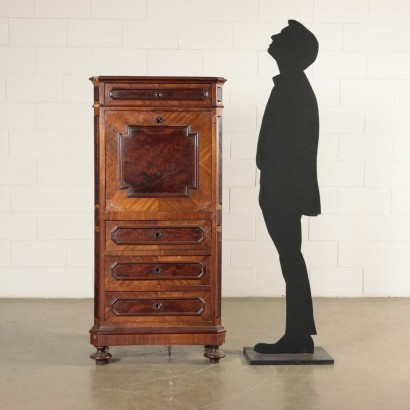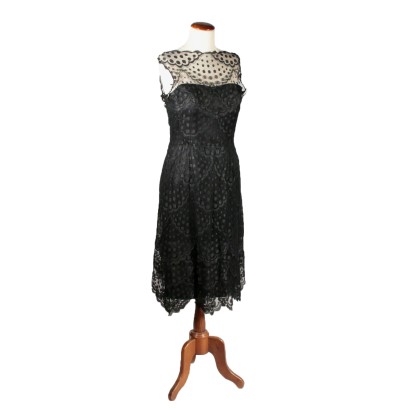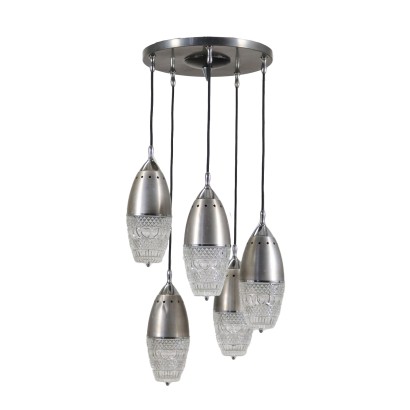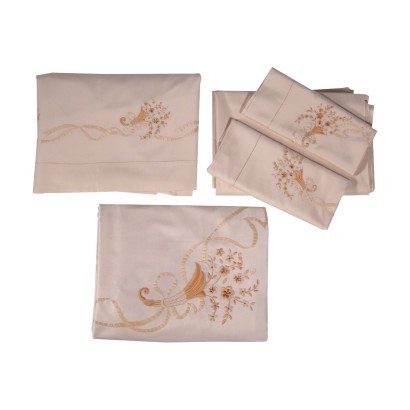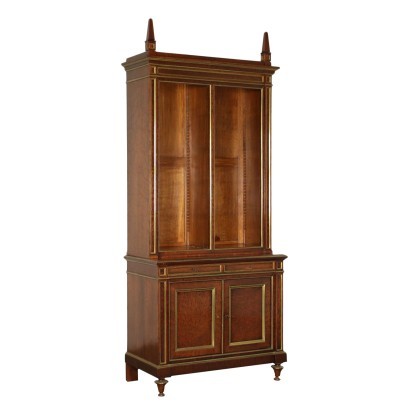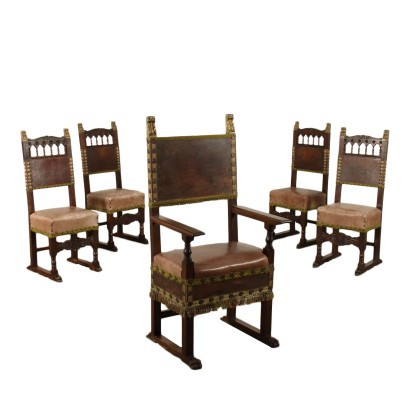Umbertine Secretaire Walnut Mahogany Italy 19th Century
Features
Style: Umbertino (1870-1900)
Age: 19th Century / 1801 - 1900
Origin: Italy
Main essence: Mahogany , Walnut
Material: Mahogany Burl Veneer
Description
Restrained dimentions; supported by 4 feet of which the fronta ones are spinning top shaped; 3 frontal drawers surmounted by a folding door that hides an architectual compartment that had been restored with small open spaces and drawers; another drawer is placed under the top. Walnut veneer with framed walnut burl reserves. Needs restoration works.
Product Condition:
The item shows signs of wear due to age. Any damage or loss is displayed as completely as possible in the pictures. It may require restoration and recovery of french polish.
Dimensions (cm):
Height: 148
Width: 70,5
Depth: 43
Additional Information
Style: Umbertino (1870-1900)
The name of this style is due to the ruler of the time Umberto I, appointed King of the Kingdom of Italy on 9 January 1878 and assassinated on 9 July 1900.The Umbertino style is typically Italian and belongs to that Eclectic period that characterized the second half of the 19th century, which lasted just under twenty years, the Umbertino style spread around 1880 and ended around 1895 when a new style called Liberty and universally known took over. like Art-Nouveau to be followed by Art-Decò.
In this style, mainly eclectic and monumental, Gothic and Baroque elements originally belonging to the Renaissance but also adorned with large masks, frames and decorations were re-proposed in the furniture, from the bedside table to the large wardrobe or sideboard.
Find out more about the Umbertine style with our insights:
An Umbertine secretary dedicated to Dante Alighieri
A comparison between a Luigi Filippo console and an Umbertina one




